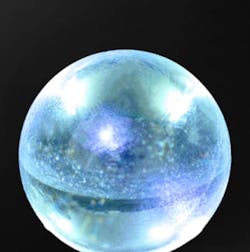Selecting Parabolic or Spherical Mirrors
When it comes to optical systems, the choice of mirrors plays a crucial role in determining performance outcomes. Among the options available, parabolic and spherical mirrors stand out for their distinct characteristics and applications.
Understanding Spherical Mirrors
Spherical mirrors, categorized as concave and convex, offer superior light collection capabilities compared to planar mirrors. Despite their advantages, they are susceptible to astigmatism, leading to divergence in light emitted from a point source due to focal length shifts.
Understanding Parabolic Mirrors
In contrast, parabolic mirrors, known for their aspheric design, efficiently convert divergent light into collimated beams. They surpass spherical mirrors in extracting collimated light and excel at precisely focusing incident light onto a single point. Applications such as high-brightness lamp houses for microscopes benefit greatly from their precision.
Choosing Between Parabolic and Spherical Mirrors
When deciding between parabolic and spherical mirrors, several factors come into play. These include beam diameter, cost constraints, space limitations, and performance requirements. The performance gap between the two becomes less pronounced with smaller beam diameters, making the decision more nuanced.
Parabolic mirrors often come at a higher cost due to their intricate reflective surfaces and larger physical size. Therefore, the decision to opt for them should consider whether the performance enhancement justifies the increased expense and space requirements.
Tailoring Solutions to Specific Needs
Ultimately, the choice between parabolic and spherical mirrors hinges on the unique requirements of each application. Careful consideration of factors like beam diameter, cost, space limitations, and desired performance outcomes is essential to make an informed decision.
Shanghai Optics provides a range of mirror solutions tailored to diverse needs. Their Off-Axis Parabolic Mirrors offer precise collimation and focusing, compact design, and customized coating options. Meanwhile, their spherical mirrors with reflective aluminum coatings cater to various optical systems, backed by years of high-precision manufacturing expertise.
In conclusion, the selection between parabolic and spherical mirrors is not a one-size-fits-all decision. It requires a thorough understanding of the application requirements and careful consideration of factors like cost, performance, and space constraints. Each type of mirror has its strengths and weaknesses, making them suitable for different optical scenarios.
Do not hesitate to contact Shanghai Optics today. We’d be more than happy to discuss your projects and how best they can become a success.
